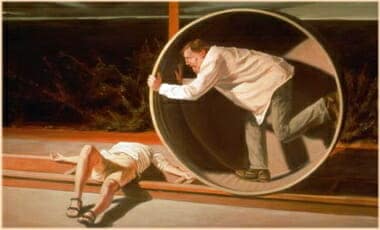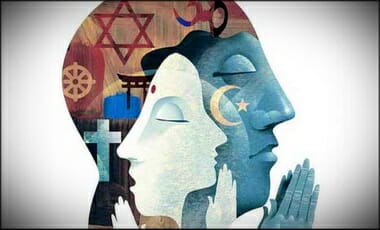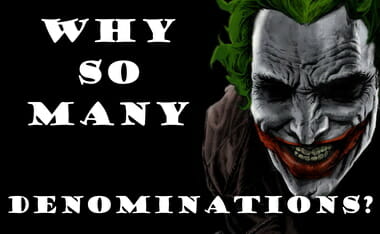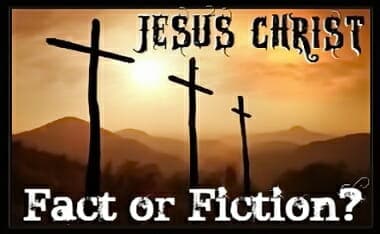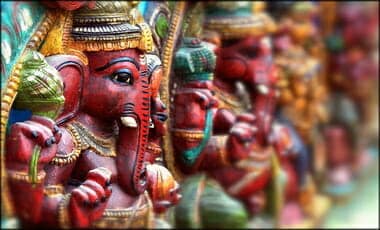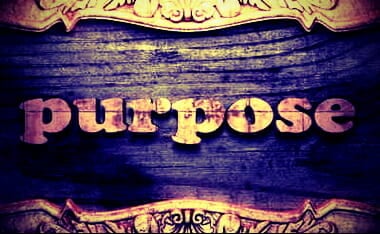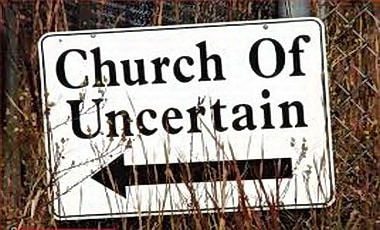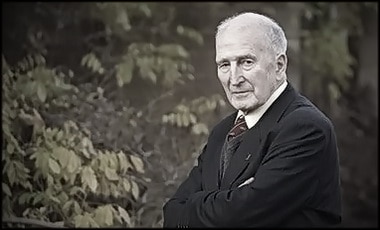Hostile Non-Biblical Pagan Witnesses
There are a number of ancient classical accounts of Jesus from pagan Greek sources. These accounts are generally hostile to Christianity and try to explain away the miraculous nature of Jesus and the events that surrounded his life. Let’s look at these hostile accounts and see what they tell us about Jesus:
Thallus (52AD)
Thallus is perhaps the earliest secular writer to mention Jesus and he is so ancient that his writings don’t even exist anymore. But Julius Africanus, writing around 221AD does quote Thallus who had previously tried to explain away the darkness that occurred at the point of Jesus’ crucifixion:
“On the whole world there pressed a most fearful darkness; and the rocks were rent by an earthquake, and many places in Judea and other districts were thrown down. This darkness Thallus, in the third book of his History, calls, as appears to me without reason, an eclipse of the sun.” (Julius Africanus, Chronography, 18:1)
If only more of Thallus’ record could be found, we would see that every aspect of Jesus’ life could be verified with a non-biblical source. But there are some things we can conclude from this account: Jesus lived, he was crucified, and there was an earthquake and darkness at the point of his crucifixion.
Pliny the Younger (61-113AD)
Early Christians are also described in secular history. Pliny the Younger, in a letter to the Roman emperor Trajan, describes the lifestyles of early Christians:
“They (the Christians) were in the habit of meeting on a certain fixed day before it was light, when they sang in alternate verses a hymn to Christ, as to a god, and bound themselves by a solemn oath, not to any wicked deeds, but never to commit any fraud, theft or adultery, never to falsify their word, nor deny a trust when they should be called upon to deliver it up; after which it was their custom to separate, and then reassemble to partake of food—but food of an ordinary and innocent kind.”
This EARLY description of the first Christians documents several facts: the first Christians believed that Jesus was GOD, the first Christians upheld a high moral code, and these early followers et regularly to worship Jesus.
Suetonius (69-140AD)
Suetonius was a Roman historian and annalist of the Imperial House under the Emperor Hadrian. His writings about Christians describe their treatment under the Emperor Claudius (41-54AD):
“Because the Jews at Rome caused constant disturbances at the instigation of Chrestus (Christ), he (Claudius) expelled them from the city (Rome).” (Life of Claudius, 25:4)
This expulsion took place in 49AD, and in another work, Suetonius wrote about the fire which destroyed Rome in 64 A.D. under the reign of Nero. Nero blamed the Christians for this fire and he punished Christians severely as a result:
“Nero inflicted punishment on the Christians, a sect given to a new and mischievous religious belief.” (Lives of the Caesars, 26.2)
There is much we can learn from Suetonius as it is related to the life of early Christians. From this very EARLY account, we know that Jesus had an immediate impact on his followers. They believed that Jesus was God enough to withstand the torment and punishment of the Roman Empire. Jesus had a curious and immediate impact on his followers, empowering them to die courageously for what they knew to be true.
Tacitus (56-120AD)
Cornelius Tacitus was known for his analysis and examination of historical documents and is among the most trusted of ancient historians. He was a senator under Emperor Vespasian and was also proconsul of Asia. In his “Annals’ of 116AD, he describes Emperor Nero’s response to the great fire in Rome and Nero’s claim that the Christians were to blame:
“Consequently, to get rid of the report, Nero fastened the guilt and inflicted the most exquisite tortures on a class hated for their abominations, called Christians by the populace. Christus, from whom the name had its origin, suffered the extreme penalty during the reign of Tiberius at the hands of one of our procurators, Pontius Pilatus, and a most mischievous superstition, thus checked for the moment, again broke out not only in Judea, the first source of the evil, but even in Rome, where all things hideous and shameful from every part of the world find their centre and become popular.”
In this account, Tacitus confirms for us that Jesus lived in Judea, was crucified under Pontius Pilate, and had followers who were persecuted for their faith in Christ.
Mara Bar-Serapion (70AD)
Sometime after 70AD, a Syrian philosopher named Mara Bar-Serapion, writing to encourage his son, compared the life and persecution of Jesus with that of other philosophers who were persecuted for their ideas. The fact that Jesus is known to be a real person with this kind of influence is important. As a matter of fact, Mara Bar-Serapion refers to Jesus as the “Wise King”:
“What benefit did the Athenians obtain by putting Socrates to death? Famine and plague came upon them as judgment for their crime. Or, the people of Samos for burning Pythagoras? In one moment their country was covered with sand. Or the Jews by murdering their wise king?…After that their kingdom was abolished. God rightly avenged these men…The wise king…Lived on in the teachings he enacted.”
From this account, we can add to our understanding of Jesus. We can conclude that Jesus was a wise and influential man who died for his beliefs. We can also conclude that his followers adopted these beliefs and lived lives that reflected them to the world in which they lived.
Phlegon (80-140AD)
In a manner similar to Thallus, Julius Africanus also mentions a historian named Phlegon who wrote a chronicle of history around 140AD. In this history, Phlegon also mentions the darkness surrounding the crucifixion in an effort to explain it:
“Phlegon records that, in the time of Tiberius Caesar, at full moon, there was a full eclipse of the sun from the sixth to the ninth hour.” (Africanus, Chronography, 18:1)
Phlegon is also mentioned by Origen (an early church theologian and scholar, born in Alexandria):
“Now Phlegon, in the thirteenth or fourteenth book, I think, of his Chronicles, not only ascribed to Jesus a knowledge of future events . . . but also testified that the result corresponded to His predictions.” (Origen Against Celsus, Book 2, Chapter 14)
“And with regard to the eclipse in the time of Tiberius Caesar, in whose reign Jesus appears to have been crucified, and the great earthquakes which then took place … ” (Origen Against Celsus, Book 2, Chapter 33)
“Jesus, while alive, was of no assistance to himself, but that he arose after death, and exhibited the marks of his punishment, and showed how his hands had been pierced by nails.” (Origen Against Celsus, Book 2, Chapter 59)
From these accounts, we can add something to our understand of Jesus and conclude that Jesus had the ability to accurately predict the future, was crucified under the reign of Tiberius Caesar and demonstrated his wounds after he was resurrected!
Lucian of Samosata: (115-200 A.D.)
Lucian was a Greek satirist who spoke sarcastically of Christ and Christians, but in the process, he did affirm that they were real people and never referred to them as fictional characters:
“The Christians, you know, worship a man to this day—the distinguished personage who introduced their novel rites, and was crucified on that account….You see, these misguided creatures start with the general conviction that they are immortal for all time, which explains the contempt of death and voluntary self-devotion which are so common among them; and then it was impressed on them by their original lawgiver that they are all brothers, from the moment that they are converted, and deny the gods of Greece, and worship the crucified sage, and live after his laws. All this they take quite on faith, with the result that they despise all worldly goods alike, regarding them merely as common property.” (Lucian, The Death of Peregrine. 11-13)
From this account we can add to our description and conclude that Jesus taught about repentance and about the family of God. These teachings were quickly adopted by Jesus’ followers and exhibited to the world around them.
Celsus (175AD)
This is the last hostile ‘pagan’ account we will examine (although there are many other later accounts in history). Celsus was quite hostile to the Gospels, but in his criticism, he unknowingly affirms and reinforces the authors and their content. His writing is extensive and he alludes to 80 different Biblical quotes, confirming their early appearance in history. In addition, he admits that the miracles of Jesus were generally believed in the early 2nd century! Here is a portion of his text:
“Jesus had come from a village in Judea, and was the son of a poor Jewess who gained her living by the work of her own hands. His mother had been turned out of doors by her husband, who was a carpenter by trade, on being convicted of adultery [with a soldier named Panthéra (i.32)]. Being thus driven away by her husband, and wandering about in disgrace, she gave birth to Jesus, a bastard. Jesus, on account of his poverty, was hired out to go to Egypt. While there he acquired certain (magical) powers which Egyptians pride themselves on possessing. He returned home highly elated at possessing these powers, and on the strength of them gave himself out to be a god.”
Celsus admits that Jesus was reportedly born of a virgin, but then argues that this could supernatural account could not be possible and offers the idea that he was a bastard son of a man named Panthera (an idea borrowed from Jews who opposed Jesus at the time). But in writing this account, Celsus does confirm that Jesus had an earthly father who was a carpenter, possessed unusual magical powers and claimed to be God.
Hostile Non-Biblical Jewish Witnesses
In addition to classical ‘pagan’ sources that chronicle the life of Jesus and his followers, there are also a number of ancient hostile Jewish sources that talk about Jesus. These are written by Jewish theologians, historians and leaders who were definitely NOT sympathetic to the Christian cause. Their writings are often VERY harsh, critical and even demeaning to Jesus. But there is still much that these writings confirm.
Josephus (37-101AD)
In more detail than any other non-biblical historian, Josephus writes about Jesus in his “the Antiquities of the Jews” in 93AD. Josephus was born just four years after the crucifixion. He was a consultant for Jewish rabbis at age thirteen, was a Galilean military commander by the age of sixteen, and he was an eyewitness to much of what he recorded in the first century A.D. Under the rule of roman emperor Vespasian, Josephus was allowed to write a history of the Jews. This history includes three passages about Christians, one in which he describes the death of John the Baptist, one in which he mentions the execution of James and describes him as the brother of Jesus the Christ, and a final passage which describes Jesus as a wise man and the messiah. Now there is much controversy about the writing of Josephus, because the first discoveries of his writings are late enough to have been re-written by Christians, who are accused of making additions to the text. So to be fair, let’s take a look at a scholarly reconstruction that has removed all the possible Christian influence from the text related to Jesus:
“Now around this time lived Jesus, a wise man. For he was a worker of amazing deeds and was a teacher of people who gladly accept the truth. He won over both many Jews and many Greeks. Pilate, when he heard him accused by the leading men among us, condemned him to the cross, (but) those who had first loved him did not cease (doing so). To this day the tribe of Christians named after him has not disappeared” (This neutral reconstruction follows closely the one proposed in the latest treatment by John Meier, Marginal Jew 1:61)
Now there are many other ancient versions of Josephus’ writing which are even more explicit about the nature of his miracles, his life and his status as the Christ, but let’s take this conservative version and see what we can learn. From this text, we can conclude that Jesus lived in Palestine, was a wise man and a teacher, worked amazing deeds, was accused buy the Jews, crucified under Pilate and had followers called Christians!
Jewish Talmud (400-700AD)
While the earliest Talmudic writings of Jewish Rabbis appear in the 5th century, the tradition of these Rabbinic authors indicates that they are faithfully transmitting teachings from the early “Tannaitic” period of the first century BC to the second century AD. There are a number of writings from the Talmud that scholars believe refer to Jesus and many of these writings are said to use code words to describe Jesus (such as “Balaam” or “Ben Stada” or “a certain one”). But let’s be very conservative here. Let’s ONLY look at the passages that refer to Jesus in a more direct way. If we do that, there are still several ancient Talmudic passages we can examine:
“Jesus practiced magic and led Israel astray” (b. Sanhedrin 43a; cf. t. Shabbat 11.15; b. Shabbat 104b)
“Rabbi Hisda (d. 309) said that Rabbi Jeremiah bar Abba said, ‘What is that which is written, ‘No evil will befall you, nor shall any plague come near your house’? (Psalm 91:10)… ‘No evil will befall you’ (means) that evil dreams and evil thoughts will not tempt you; ‘nor shall any plague come near your house’ (means) that you will not have a son or a disciple who burns his food like Jesus of Nazareth.” (b. Sanhedrin 103a; cf. b. Berakhot 17b)
“Our rabbis have taught that Jesus had five disciples: Matthai, Nakai, Nezer, Buni and Todah. They brought Matthai to (to trial). He said, ‘Must Matthai be killed? For it is written, ‘When (mathai) shall I come and appear before God?’” (Psalm 92:2) They said to him, “Yes Matthai must be killed, for it is written, ‘When (mathai) he dies his name will perish’” (Psalm 41:5). They brought Nakai. He said to them, “Must Nakai be killed? For it is written, “The innocent (naqi) and the righteous will not slay’” (Exodus 23:7). They said to him, “Yes, Nakai must be kille, for it is written, ‘In secret places he slays the innocent (naqi)’” (Psalm 10:8). (b. Sanhedrin 43a; the passage continues in a similar way for Nezer, Buni and Todah)
And this, perhaps the most famous of Talmudic passages about Jesus:
“It was taught: On the day before the Passover they hanged Jesus. A herald went before him for forty days (proclaiming), “He will be stoned, because he practiced magic and enticed Israel to go astray. Let anyone who knows anything in his favor come forward and plead for him.” But nothing was found in his favor, and they hanged him on the day before the Passover. (b. Sanhedrin 43a)
From just these passages that mention Jesus by name, we can conclude that Jesus had magical powers, led the Jews away from their beliefs, had disciples who were martyred for their faith (one of whom was named Matthai), and was executed on the day before the Passover.
The Toledot Yeshu (1000AD)
The Toledot Yeshu is a medieval Jewish retelling of the life of Jesus. It is completely anti-Christian, to be sure. There are many versions of these ‘retellings’, and as part of the transmitted oral and written tradition of the Jews, we can presume their original place in antiquity, dating back to the time of Jesus’ first appearance as an influential leader who was drawing Jews away from their faith in the Law. The Toledot Yeshu contains a determined effort to explain away the miracles of Jesus, and to deny the virgin birth. In some places, the text is quite vicious, but it does confirm many elements of the New Testament writings. Let’s take a look at a portion of the text (Jesus is refered to as ‘Yehoshua’):
“In the year 3671 (in Jewish reckonging, it being ca 90 B.C.) in the days of King Jannaeus, a great misfortune befell Israel, when there arose a certain disreputable man of the tribe of Judah, whose name was Joseph Pandera. He lived at Bethlehem, in Judah. Near his house dwelt a widow and her lovely and chaste daughter named Miriam. Miriam was betrothed to Yohanan, of the royal house of David, a man learned in the Torah and God-fearing. At the close of a certain Sabbath, Joseph Pandera, attractive and like a warrior in appearance, having gazed lustfully upon Miriam, knocked upon the door of her room and betrayed her by pretending that he was her betrothed husband, Yohanan. Even so, she was amazed at this improper conduct and submitted only against her will. Thereafter, when Yohanan came to her, Miriam expressed astonishment at behavior so foreign to his character. It was thus that they both came to know the crime of Joseph Pandera and the terrible mistake on the part of Miriam… Miriam gave birth to a son and named him Yehoshua, after her brother. This name later deteriorated to Yeshu (“Yeshu” is the Jewish “name” for Jesus. It means “May His Name Be Blotted Out”). On the eighth day he was circumcised. When he was old enough the lad was taken by Miriam to the house of study to be instructed in the Jewish tradition. One day Yeshu walked in front of the Sages with his head uncovered, showing shameful disrespect. At this, the discussion arose as to whether this behavior did not truly indicate that Yeshu was an illegitimate child and the son of a niddah. Moreover, the story tells that while the rabbis were discussing the Tractate Nezikin, he gave his own impudent interpretation of the law and in an ensuing debate he held that Moses could not be the greatest of the prophets if he had to receive counsel from Jethro. This led to further inquiry as to the antecedents of Yeshu, and it was discovered through Rabban Shimeon ben Shetah that he was the illegitimate son of Joseph Pandera. Miriam admitted it. After this became known, it was necessary for Yeshu to flee to Upper Galilee. After King Jannaeus, his wife Helene ruled over all Israel. In the Temple was to be found the Foundation Stone on which were engraven the letters of God’s Ineffable Name. Whoever learned the secret of the Name and its use would be able to do whatever he wished. Therefore, the Sages took measures so that no one should gain this knowledge. Lions of brass were bound to two iron pillars at the gate of the place of burnt offerings. Should anyone enter and learn the Name, when he left the lions would roar at him and immediately the valuable secret would be forgotten. Yeshu came and learned the letters of the Name; he wrote them upon the parchment which he placed in an open cut on his thigh and then drew the flesh over the parchment. As he left, the lions roared and he forgot the secret. But when he came to his house he reopened the cut in his flesh with a knife an lifted out the writing. Then he remembered and obtained the use of the letters. He gathered about himself three hundred and ten young men of Israel and accused those who spoke ill of his birth of being people who desired greatness and power for themselves. Yeshu proclaimed, “I am the Messiah; and concerning me Isaiah prophesied and said, ‘Behold, a virgin shall conceive, and bear a son, and shall call his name Immanuel.’” He quoted other messianic texts, insisting, “David my ancestor prophesied concerning me: ‘The Lord said to me, thou art my son, this day have I begotten thee.’” The insurgents with him replied that if Yeshu was the Messiah he should give them a convincing sign. They therefore, brought to him a lame man, who had never walked. Yeshu spoke over the man the letters of the Ineffable Name, and the leper was healed. Thereupon, they worshipped him as the Messiah, Son of the Highest. When word of these happenings came to Jerusalem, the Sanhedrin decided to bring about the capture of Yeshu. They sent messengers, Annanui and Ahaziah, who, pretending to be his disciples, said that they brought him an invitation from the leaders of Jerusalem to visit them. Yeshu consented on condition the members of the Sanhedrin receive him as a lord. He started out toward Jerusalem and, arriving at Knob, acquired an ass on which he rode into Jerusalem, as a fulfillment of the prophecy of Zechariah. The Sages bound him and led him before Queen Helene, with the accusation: “This man is a sorcerer and entices everyone.” Yeshu replied, “The prophets long ago prophesied my coming: ‘And there shall come forth a rod out of the stem of Jesse,’ and I am he; but as for them, Scripture says ‘Blessed is the man that walketh not in the counsel of the ungodly.’” Queen Helene asked the Sages: “What he says, is it in your Torah?” They replied: “It is in our Torah, but it is not applicable to him, for it is in Scripture: ‘And that prophet which shall presume to speak a word in my name, which I have not commanded him to speak or that shall speak in the name of other gods, even that prophet shall die.’ He has not fulfilled the signs and conditions of the Messiah.” Yeshu spoke up: “Madam, I am the Messiah and I revive the dead.” A dead body was brought in; he pronounced the letters of the Ineffable Name and the corpse came to life. The Queen was greatly moved and said: “This is a true sign.” She reprimanded the Sages and sent them humiliated from her presence. Yeshu’s dissident followers increased and there was controversy in Israel. Yeshu went to Upper Galilee. the Sages came before the Queen, complaining that Yeshu practiced sorcery and was leading everyone astray. Therefore she sent Annanui and Ahaziah to fetch him. The found him in Upper Galilee, proclaiming himself the Son of God. When they tried to take him there was a struggle, but Yeshu said to the men of Upper Galilee: “Wage no battle.” He would prove himself by the power which came to him from his Father in heaven. He spoke the Ineffable Name over the birds of clay and they flew into the air. He spoke the same letters over a millstone that had been placed upon the waters. He sat in it and it floated like a boat. When they saw this the people marveled. At the behest of Yeshu, the emissaries departed and reported these wonders to the Queen. She trembled with astonishment. Then the Sages selected a man named Judah Iskarioto and brought him to the Sanctuary where he learned the letters of the Ineffable Name as Yeshu had done. When Yeshu was summoned before the queen, this time there were present also the Sages and Judah Iskarioto. Yeshu said: “It is spoken of me, ‘I will ascend into heaven.’” He lifted his arms like the wings of an eagle and he flew between heaven and earth, to the amazement of everyone…Yeshu was seized. His head was covered with a garment and he was smitten with pomegranate staves; but he could do nothing, for he no longer had the Ineffable Name. Yeshu was taken prisoner to the synagogue of Tiberias, and they bound him to a pillar. To allay his thirst they gave him vinegar to drink. On his head they set a crown of thorns. There was strife and wrangling between the elders and the unrestrained followers of Yeshu, as a result of which the followers escaped with Yeshu to the region of Antioch; there Yeshu remained until the eve of the Passover. Yeshu then resolved to go the Temple to acquire again the secret of the Name. That year the Passover came on a Sabbath day. On the eve of the Passover, Yeshu, accompanied by his disciples, came to Jerusalem riding upon an ass. Many bowed down before him. He entered the Temple with his three hundred and ten followers. One of them, Judah Iskarioto apprised the Sages that Yeshu was to be found in the Temple, that the disciples had taken a vow by the Ten Commandments not to reveal his identity but that he would point him out by bowing to him. So it was done and Yeshu was seized. Asked his name, he replied to the question by several times giving the names Mattai, Nakki, Buni, Netzer, each time with a verse quoted by him and a counter-verse by the Sages. Yeshu was put to death on the sixth hour on the eve of the Passover and of the Sabbath. When they tried to hang him on a tree it broke, for when he had possessed the power he had pronounced by the Ineffable Name that no tree should hold him. He had failed to pronounce the prohibition over the carob-stalk, for it was a plant more than a tree, and on it he was hanged until the hour for afternoon prayer, for it is written in Scripture, “His body shall not remain all night upon the tree.” They buried him outside the city. On the first day of the week his bold followers came to Queen Helene with the report that he who was slain was truly the Messiah and that he was not in his grave; he had ascended to heaven as he prophesied. Diligent search was made and he was not found in the grave where he had been buried. A gardener had taken him from the grave and had brought him into his garden and buried him in the sand over which the waters flowed into the garden. Queen Helene demanded, on threat of a severe penalty, that the body of Yeshu be shown to her within a period of three days. There was a great distress. When the keeper of the garden saw Rabbi Tanhuma walking in the field and lamenting over the ultimatum of the Queen, the gardener related what he had done, in order that Yeshu’s followers should not steal the body and then claim that he had ascended into heaven. The Sages removed the body, tied it to the tail of a horse and transported it to the Queen, with the words, “This is Yeshu who is said to have ascended to heaven.” Realizing that Yeshu was a false prophet who enticed the people and led them astray, she mocked the followers but praised the Sages.
Now in spite of the fact that the ancient Jews who wrote this did their best to argue for another interpretation of the Life of Jesus, they did make several claims here about Jesus. This passage, along with several others from the Toledot tradition, confirms that Jesus claimed to be the Messiah, healed the lame, said that Isaiah foretold of his life, was worshipped as God, arrested by the Jews, beaten with rods, given vinegar to drink, wore a crown of thorns, rode into Jerusalem on a donkey, was betrayed by a man named Judah Iskarioto, and had followers who claimed he was resurrected and ascended, leaving an empty tomb!
